Oral piercings and oral health
Oral piercings and oral health
mouth piercings
Piercings are popular. About 5% of young adults have a mouth piercing. Do you want or have you had a mouth piercing? Then pay attention to the choice of material, the place in your mouth, the quality of the application and the care of your mouth (piercing). Applying and wearing a mouth piercing is not without risks. Many problems can be avoided with the right choices and care.
Age limit and permission
In the Netherlands you have to be twelve years or older if you want to get a mouth piercing. Between the ages of twelve and sixteen, a parent must give permission and be present when the mouth piercing is performed. From the age of sixteen you can decide for yourself. First you have to fill out a consent form with questions about your health, information about voluntariness and risks of piercing. Inform the piercer about any illnesses you have or have had, allergies, skin problems and medications you are taking.
Choose a professional piercer
In the Netherlands there is a law for putting piercings. There is also a mandatory hygiene guideline for piercers. Piercers who comply are issued a permit. The GGD checks whether the piercing studios adhere to the guidelines. Unhygienic working can entail serious health hazards (such as infections, Hepatitis B, C and HIV). For example, a piercer must use sterilized instruments and safe materials. In addition, the space and employees must meet strict requirements. So choose your piercer carefully! On www.veiligtatoeerenenpiercen.nl are licensed piercers.

In your tongue or in your lip?
Tongue piercings are the most common. Make sure your tongue piercing is centered and far enough back on your tongue. You can prevent permanent damage if the tongue piercing does not touch your teeth and gums. After that, the lip piercing is the most popular. Make sure that the piercer does not place the flat back of your lip piercing on your gum line. This way there is less chance of damaging your gums.

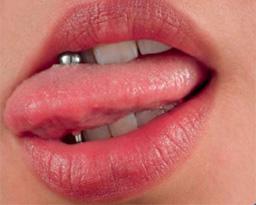
The right materials
In the Netherlands, piercers generally use safe materials. Piercings are often made of surgical steel or titanium. Also, mouth jewelry must have a high-gloss outer layer and a super smooth surface. A piercing may contain a small amount of nickel. Be aware that nickel can cause an allergic reaction, such as eczema.
Don't play with your mouth piercing. This can permanently damage your teeth and gums.
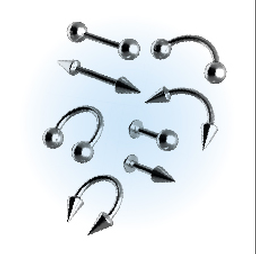
Placing the mouth piercing
Getting a mouth piercing is relatively quick and easy. Anesthesia is not common. Some feel nothing and others feel uncomfortable for a moment. The piercer uses forceps to clamp the moveable tongue or lip during the piercing. It is not wise to put a piercing yourself. The instruments that 'do-it-yourselfers' use for piercing are not sterile and therefore unsuitable. They also often drill in the wrong place, which can hit blood vessels or nerves and the piercing does not stay in place. The risk of infection with self-piercing is high.
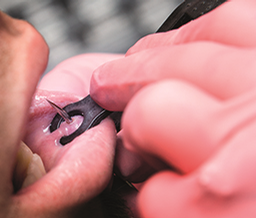
Healing
Immediately after the piercing, swelling and redness is normal. A slight secretion of exudate is also common. The tissue may bleed slightly, be bruised and tender. Cooling with ice can help reduce swelling and thus limit the pain afterwards. You can use paracetamol for the pain. Any physical complaints, such as itching and redness, must have subsided within 48 hours after setting.
Healing time varies by piercing and by person. Your own wound and oral care influences the healing time. This process can take between four and six weeks for tongue piercings, and seven to nine weeks for lip piercings.
Because of the swelling, a long barbell is usually placed when a tongue piercing is performed. Replace the bar with a shorter one when the wound has healed. This prevents the mouth piercing from touching your teeth and gums when eating and talking. The chance of permanent damage to your teeth and gums is then less.
Place a well-fitting piece of jewelry. This prevents permanent damage to your teeth and gums.
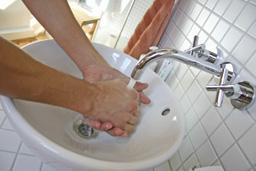
Oral care for oral piercings
Oral hygiene is key for mouth piercing wearers. Brush your teeth thoroughly for two minutes twice a day with a soft toothbrush and fluoride toothpaste. Also keep the spaces between the teeth clean. Consult with your dental care provider whether and if so which aid you should use. Once the wound has healed, also brush your piercing daily with a soft toothbrush to prevent plaque and tartar from adhering to the piercing. Does the piercing continue to look dirty after brushing? It may have tartar on it. Removing your piercing or placing a new one is the best solution.
Problems due to mouth piercings in the short term
Oral piercings can cause a variety of problems in the mouth and affect general health. If the mouth piercing is done according to the general hygiene rules, the risk of complications in the first weeks after placement is small.
You may pass out and experience breathing problems or (prolonged) bleeding during or immediately after your mouth piercing. New piercings are open wounds and can lead to infection or inflammation. Pain, redness, swelling, warmth and possibly wound fluid are the characteristics. You can reduce the risk of infection and inflammation with the right aftercare. Ask your piercer about it.
If an inflammation does not go away, contact your dentist. Your piercing may need to be removed. Despite good hygiene measures, bacteria enter the bloodstream through the piercing wound. That can cause an infection. Placing tongue piercings can in rare cases cause an infection of the heart. Therefore, do not start with a mouth piercing if you have (congenital) heart problems.
Problems due to mouth piercings in the longer term
Mouth piercings can cause long-term gum problems and tooth breakage. In addition, they can grow in.
Gum problems
Mouth piercings can contribute to gum disease and receding gums. The roots of the lower incisors may become (partially) exposed. That can give sensitivity. Exposed roots wear out faster and are more susceptible to punctures. Once gums have receded, they will not come back.
Tooth fracture
Mouth piercings can break off pieces of enamel, but also larger pieces of teeth. With tongue piercings, in most cases, the large molars are damaged. Do not play, bite or tap your piercing. This can damage your teeth.
With a lip piercing, the risk of receding gums is 4x greater.
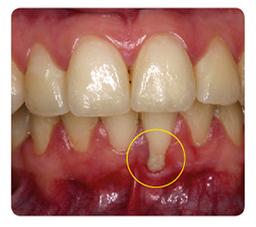
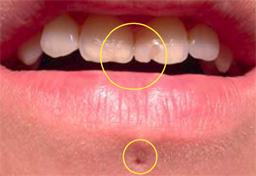
With your piercing to the dentist
Let your dental care provider know that you are wearing an oral piercing. Have your piercing checked to see if it affects your teeth and oral health. In case of anesthesia in the lower jaw, the practitioner may ask to remove your piercing. To the hospital? Then make sure you remove your mouth piercing(s) when x-rays are taken of your head and neck area.
Are you sure?
Think carefully about whether you really want to get a mouth piercing. Is your decision for a mouth piercing made? Then choose a professional piercer and get good advice. Ensure good oral hygiene every day and regularly visit your oral care provider for a check-up of your mouth (piercing).
Any questions?
Then contact your dentist or dental hygienist. More information is also available at www.ggd.nl and on www.veiligtatoeerenenpiercen.nl.